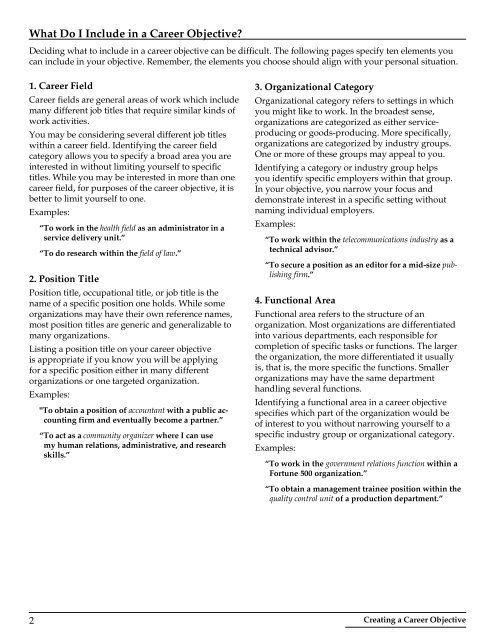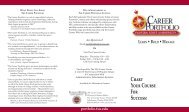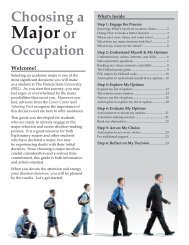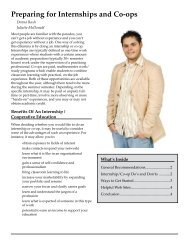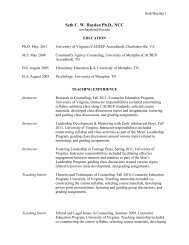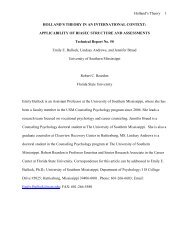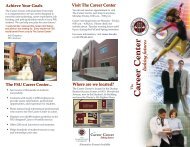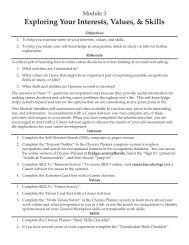Creating a Career Objective - The Career Center
Creating a Career Objective - The Career Center
Creating a Career Objective - The Career Center
Create successful ePaper yourself
Turn your PDF publications into a flip-book with our unique Google optimized e-Paper software.
What Do I Include in a <strong>Career</strong> <strong>Objective</strong>?Deciding what to include in a career objective can be difficult. <strong>The</strong> following pages specify ten elements youcan include in your objective. Remember, the elements you choose should align with your personal situation.1. <strong>Career</strong> Field<strong>Career</strong> fields are general areas of work which includemany different job titles that require similar kinds ofwork activities.You may be considering several different job titleswithin a career field. Identifying the career fieldcategory allows you to specify a broad area you areinterested in without limiting yourself to specifictitles. While you may be interested in more than onecareer field, for purposes of the career objective, it isbetter to limit yourself to one.Examples:“To work in the health field as an administrator in aservice delivery unit.”“To do research within the field of law.”2. Position TitlePosition title, occupational title, or job title is thename of a specific position one holds. While someorganizations may have their own reference names,most position titles are generic and generalizable tomany organizations.Listing a position title on your career objectiveis appropriate if you know you will be applyingfor a specific position either in many differentorganizations or one targeted organization.Examples:"To obtain a position of accountant with a public accountingfirm and eventually become a partner.”“To act as a community organizer where I can usemy human relations, administrative, and researchskills.”3. Organizational CategoryOrganizational category refers to settings in whichyou might like to work. In the broadest sense,organizations are categorized as either serviceproducingor goods-producing. More specifically,organizations are categorized by industry groups.One or more of these groups may appeal to you.Identifying a category or industry group helpsyou identify specific employers within that group.In your objective, you narrow your focus anddemonstrate interest in a specific setting withoutnaming individual employers.Examples:“To work within the telecommunications industry as atechnical advisor.”“To secure a position as an editor for a mid-size publishingfirm.”4. Functional AreaFunctional area refers to the structure of anorganization. Most organizations are differentiatedinto various departments, each responsible forcompletion of specific tasks or functions. <strong>The</strong> largerthe organization, the more differentiated it usuallyis, that is, the more specific the functions. Smallerorganizations may have the same departmenthandling several functions.Identifying a functional area in a career objectivespecifies which part of the organization would beof interest to you without narrowing yourself to aspecific industry group or organizational category.Examples:“To work in the government relations function within aFortune 500 organization.”“To obtain a management trainee position within thequality control unit of a production department.”2<strong>Creating</strong> a <strong>Career</strong> <strong>Objective</strong>


